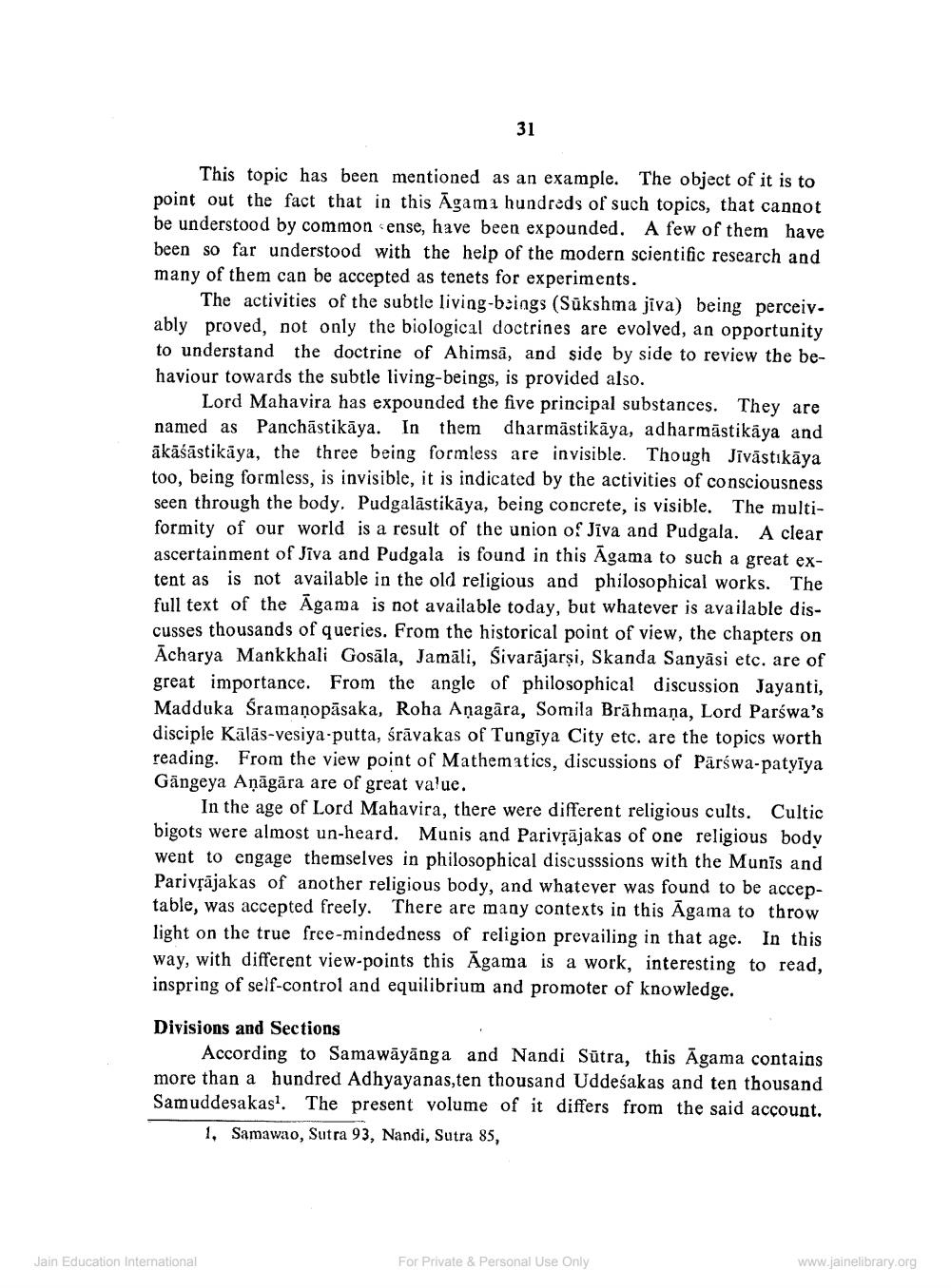________________
31
This topic has been mentioned as an example. The object of it is to point out the fact that in this Agama hundreds of such topics, that cannot be understood by common ense, have been expounded. A few of them have been so far understood with the help of the modern scientific research and many of them can be accepted as tenets for experiments.
The activities of the subtle living beings (Sūkshma jiva) being perceiyably proved, not only the biological doctrines are evolved, an opportunity to understand the doctrine of Ahimsā, and side by side to review the behaviour towards the subtle living beings, is provided also.
Lord Mahavira has expounded the five principal substances. They are named as Panchāstikāya. In them dharmāstikāya, adharmästikāya and ākāśāstikāya, the three being formless are invisible. Though Jivāstıkāya too, being formless, is invisible, it is indicated by the activities of consciousness seen through the body. Pudgalāstikāya, being concrete, is visible. The multiformity of our world is a result of the union of Jiva and Pudgala. A clear ascertainment of Jiva and Pudgala is found in this Agama to such a great extent as is not available in the old religious and philosophical works. The full text of the Āgama is not available today, but whatever is available discusses thousands of queries. From the historical point of view, the chapters on Acharya Mankkhali Gosāla, Jamāli, Sivarājarşi, Skanda Sanyāsi etc. are of great importance. From the angle of philosophical discussion Jayanti, Madduka śramaṇopāsaka, Roha Anagāra, Somila Brāhmaṇa, Lord ParŚwa's disciple Kālās-vesiya-putta, śrāvakas of Tungiya City etc. are the topics worth reading. From the view point of Mathematics, discussions of Pārswa-patyīya Gängeya Aņāgāra are of great value.
In the age of Lord Mahavira, there were different religious cults. Cultic bigots were almost un-heard. Munis and Parivịājakas of one religious body went to engage themselves in philosophical discussions with the Munis and Parivệājakas of another religious body, and whatever was found to be acceptable, was accepted freely. There are many contexts in this Agama to throw light on the true free-mindedness of religion prevailing in that age. In this way, with different view-points this Agama is a work, interesting to read, inspring of self-control and equilibrium and promoter of knowledge.
Divisions and Sections
According to Samawāyānga and Nandi Sūtra, this Āgama contains more than a hundred Adhyayanas,ten thousand Uddeśakas and ten thousand Samuddesakas? The present volume of it differs from the said account.
1. Samawao, Sutra 93, Nandi, Sutra 85,
Jain Education International
For Private & Personal Use Only
www.jainelibrary.org




